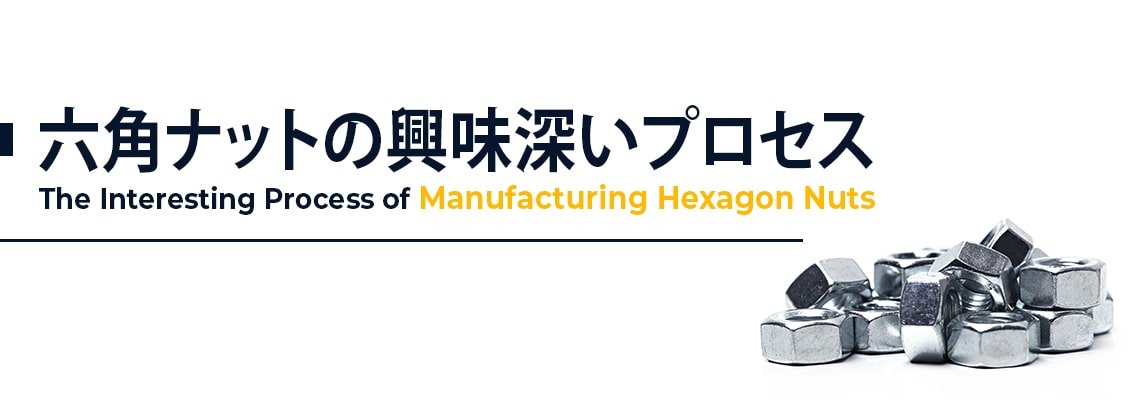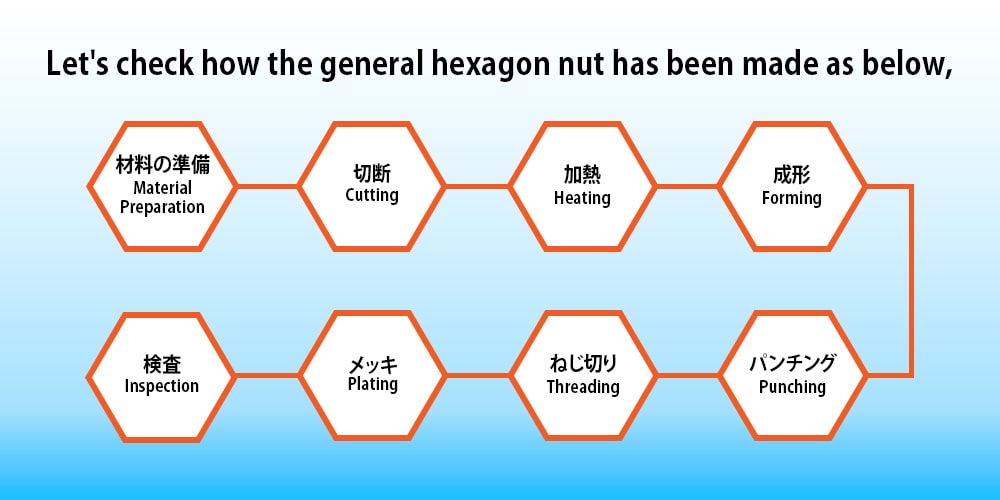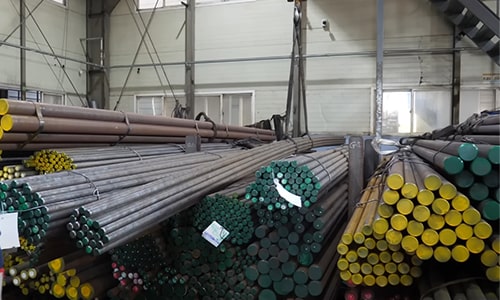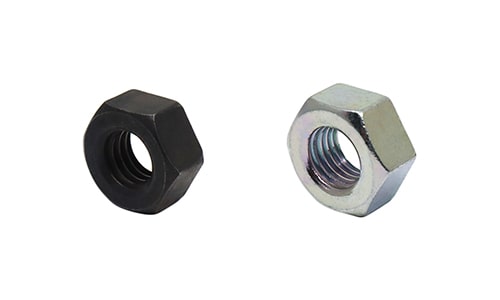The Interesting Process of Manufacturing Hexagon Nuts
8371 Views |

What is a Hexagon Nut? A hexagon nut is a common fastener found almost everywhere. It’s a type of female fastener designed to be used with a male fastener. Characterized by its six-sided shape and a threaded hole in the center, hexagon nuts come in various standards worldwide, including JIS B-1181, DIN 934, ISO 4032, ASTM A563, and more. While the manufacturing process remains largely consistent, dimensions and inspection processes can vary.
Hexagon Nut Manufacturing in Japan, there are several nut manufacturers from small workshops to large factories across Japan, each of them is specializing in a specific product range.
For example, some factories good at producing large quantities of nuts from M3 – 12, while others specialize in smaller quantities but can handle a variety of sizes.
Let’s check how the general hexagon nut has been made as below,
1. Material Preparation: The first step in creating a hexagon nut is preparing material suitable for the size of the nut, type of material is depending on method of manufacture.
1.1 In case of Cold Forging, Wire rod will be applied as material.
1.2 In case of Hot Forging, Round bar will be applied as material.
1.3 In case of Cutting Work, Hexagon bar will be applied as material but for giant size Hex nut, round bar will be applied.
In this blog, I will explain only for Hex Nut made from Hot Forging process only.
2. Cutting: Round bars, Wire, or Hex Bar, are typically sold in lengths of 1,000mm or more, are cut into the desired length, usually exceeding the height of the nut.
3. Heating (For Hot Forging) : length cut material is heated to a specific temperature to soften it and prepare it for forming.
4. Forming: The heated nut undergoes a two-step pressing process. Initially, it is pressed into a rounder shape using an upper die. It will then press again with an upper die and hexagon bottom die to form the shape, resulting in a hexagon-shaped nut without a hole. Process may vary depending on method of manufacture.
5. Punching: A punching machine is used to create an initial round straight hole in the hexagon-shaped nut.
6. Threading: A thread tap is used to thread the round straight hole. Lubrication is necessary during the thread-making process. If shot blasting is required, it must be performed before the threading process.
7. Plating: Depending on the customer’s request, the hexagon nut may undergo a specific plating process such as Black oxide or Electro galvanizing.
- If plating is not required, the hexagon nut is cleaned using a specific treatment process to remove manufacturing scrap.
8. Inspection: The Quality Control (QC) department works diligently to inspect the product to ensure it meets the standard requirements, in this case, JIS, to guarantee customer satisfaction.
Conclusion : The manufacturing process of a hexagon nut is indeed interesting. We hope this blog post gives you with valuable information of a hexagon nut from a simple piece of metal to a crucial fastener.

Written by
Mr.Nuttapol Sirilert
International Sales Dept.
Hanshin Neji Co.,Ltd.



